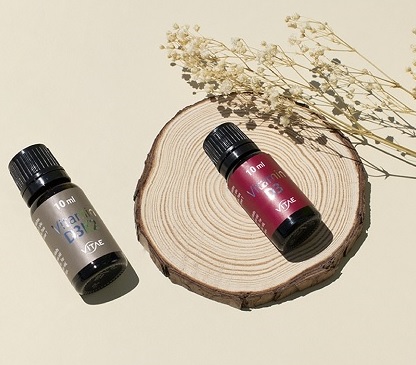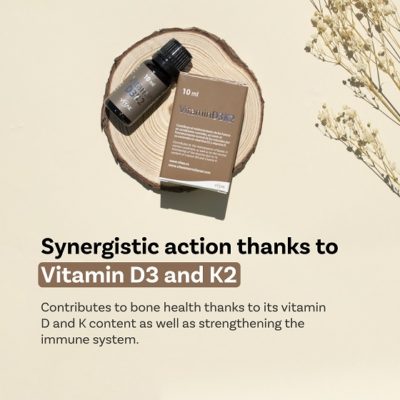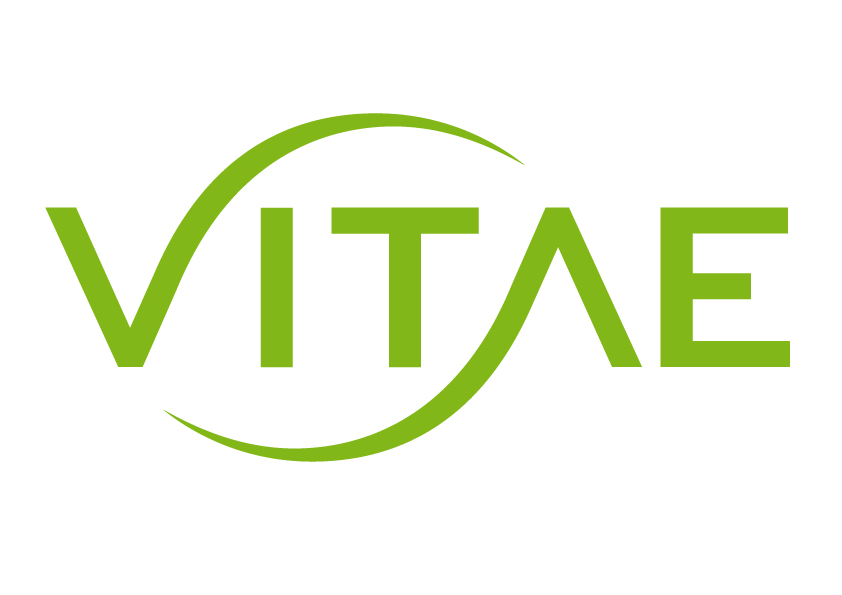Vitamin D has become a hot topic of conversation. European Public Health authorities reckon anyone living in the countries where exposure to sunlight is scarce during a large part of the year, e.g. the UK, are likely to have less-than-optimal levels, or even experience deficiency.
Vitamin D is responsible for key underlining processes that ensure you experience optimum health in relation to a number of body systems, including the brain and nervous system, the cardiovascular and endocrine (hormonal) system and the skin. Hundreds of scientific papers and medical studies are published every year, covering in detail the full range of vitamin D’s superpowers. However, today I wanted to focus on vitamin D’s role in skin health.
The skin is the crucial catalyst and gateway for vitamin D production. This means that vitamin D is primarily synthesized in the skin when it is exposed to UV light, and from the skin it gets to everywhere else it needs to in the body.
If you’re lucky enough to get a couple of holidays in sunny Spain every year, you’ll come back with better levels, but these will not last forever, certainly not for months. It depends on complex genetic factors whether you’re able to “hold on” to vitamin D, or whether you “dump it” even when exposed to sunlight every day. On that basis, it doesn’t really matter whether you live in the Costa del Sol or in Aberdeen. You can have low vitamin D levels either way. But let’s not be as dramatic as that. Genes are important, but not your destiny. And because vitamin D can be “topped up” with diet and supplements too, I’m not too worried! More on that in a moment…
The skin’s ability to create vitamin D decreases up to 75 percent from the age of 20 to 70, which means your need for supplemental vitamin D increases as you age. This means that it becomes increasingly important to make sure your diet contains enough of the key sources: oily fish and dairy produce. There’s a little in mushrooms too, but that’s the vegetarian variety, vitamin D2, which is less active in the body and not responsible for the main action that makes vitamin D3 particularly important as an “anti-ageing” nutrient: inflammation. Or lack of. Vitamin D3 is one of the most powerful anti-inflammatory nutrients known to man. It also modulates the activity of the immune system. That means that if yours if playing up and is low, vitamin D3 will give it a kick start and make it work harder. If, on the other hand, yours is hyperactive, it’ll calm it down. Hyperactivity of our immune system is commonplace and is triggered by ongoing stress, amongst other factors. When your immune system is either too low or “too high”, your skin is likely to suffer. Why? Because it is your first layer of protection from environmental attacks, including free radicals from UV radiation, pollution, smoke, trauma. It is likely to suffer from low grade inflammation, which makes it age faster. Having sufficient vitamin D in the skin helps minimize inflammation, improving acne, boosting skin elasticity, stimulating collagen production, enhancing radiance, and lessening lines and the appearance of dark (liver) spots.
Many of my clients have vitamin D deficiencies as a result of avoiding the sun and wearing a daily sunscreen in fear of skin ageing or cancer. I’ve noticed that the skin of those with low vitamin D levels have a shallow and dull appearance. And because vitamin D is a fat-based nutrient, they tend to be those who’ve had a low fat diet for years. So not only have they depleted their vitamin D levels by avoiding the sun, they’ve also not replenished them by adding good fats to their diet, like those from oily fish and full fat dairy. And because other fat-based vitamins and anti-oxidants are present in nature in the same foods, e.g. vitamins A + K, those deficient in vitamin D tend to also experience deficiencies in these complementary nutrients, which are as essential as vitamin D for healthy, glowing skin.
My recommendation for absolutely beautiful skin, at any age, includes a little sun. Yes, you need it. But just a few minutes (10 or so) of direct sun exposure a day will do. Expose your arms and legs if you can too. Additionally, have a diet rich in oily fish like salmon, mackerel, sardines, anchovies. 4-5 portions per week. And LOTS of greens. Green vegetable should be about half of your plate. Then test (ideally) and supplement to keep levels around 150-200 nmol/L. Supplement with around 1,600IU / day and make sure that your supplement contains complementary nutrients such as vitamin K2, A, E and CoQ10, plus antioxidants like astaxanthin. These are all fat-based nutrients that enhance vitamin’s D bioavailability, and that will make your skin altogether healthier and more beautiful than it already is.
In our catalogue, we have two opcions with vitamin D: one of these, Vitamin D3 (immune system) and the other, Vitamin D3K2 (musculoskeletal health)





